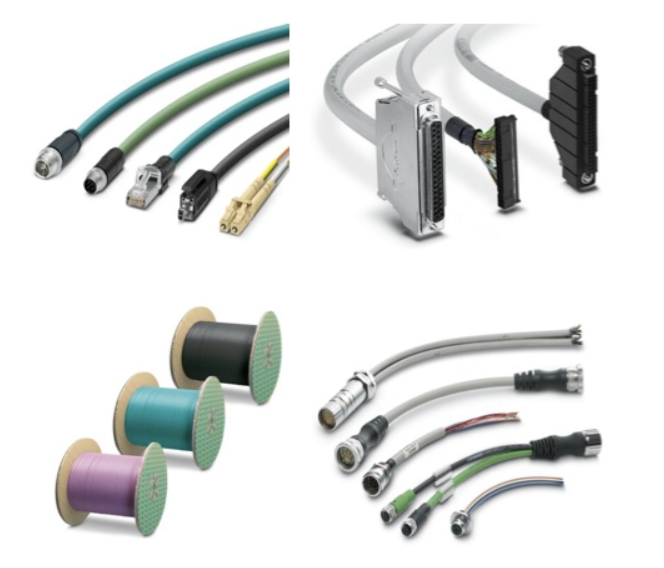Phoenix Contact Cables & Connectors

Engineers at Phoenix Contact created connectors that accomplish trustworthy, efficient links. The designs are forward-thinking, so they make installing and maintaining connections as easy as possible. Phoenix Contact offers several connector series, including their circular, rectangular, and PCB products. Each has been designed with a unique set of applications in mind. For instance, some are intended for use in high-temperature environments, while others are made to work at elevated voltages.
It is clear that Phoenix Contact takes quality and innovation very seriously. They subject their cables and connectors to a strict testing regimen and require that they adhere to international standards. This is how they ensure that the products they produce are truly workmanlike and will stand up to the rigors of an industrial environment. Moreover, it is evident that the company's commitment to quality is not just about putting the best product out there; it is also about the responsibility they take for providing that product and the connection it provides.
Industrial Wire Types: Part 2
Twisted Pair Wire
Twisted pair wire is most commonly seen in scenarios where data is being transfer to and from certain locations. It uses two separate conductors, twisted together, for a single circuit. The two conductors are twisted together to reduce electromagnetic interference or “cross talk” between the two wires. It is common to use twisted pairs in place of a coax cable for data transfer. Coax can be fairly expensive and can be more difficult to run whereas twisted wire is not as thick or rigid and can easily be maneuvered in tough to reach locations. Twisted wire will always come in pairs, but there are no limits to how many pairs can be included in a single cable. For instance, CAT5 or CAT6 cable, which is commonly used in home and office networks, uses twisted pair wire. This type of cable has four different pairs of communication lines.
Shielded Wire
Shielded wire is different from regular wire insulation in that it is made of a conductive material. This conductive material includes, braided strands of copper (or other types of metal), non-braided aluminum and copper tape. The purpose of this shielding is to protect the signal passing through the wire from any outside interference. Unlike twisted cable, which is trying to eliminate interference among wire being used in the same circuit, shielded wire needs protection from outside interference and from other electrical circuits in the area.
Tray Cable
Tray Cable is a factory assembly of two or more insulated conductors, with or without associated bare or covered grounding conductors under a nonmetallic sheath, for installation in cable trays, in raceways, or where supported by a messenger wire. It is common to see tray cable that has many different conductors that can be used for control wiring, instrumentation and signal wiring as well as many other applications. Tray cable is often rated for use in direct sunlight applications, as well as direct burial applications. Because of the potential weight of tray cable when suspended, it will need to be supported properly to avoid hazardous environments.

